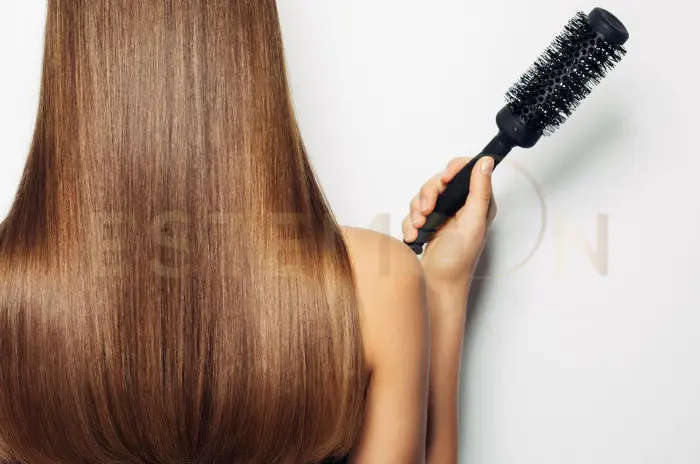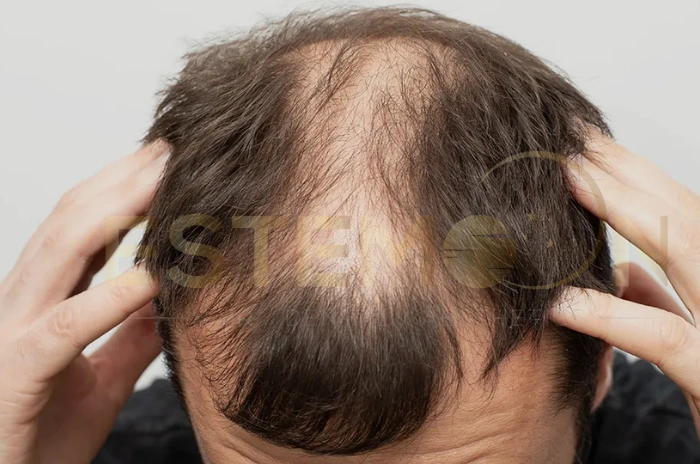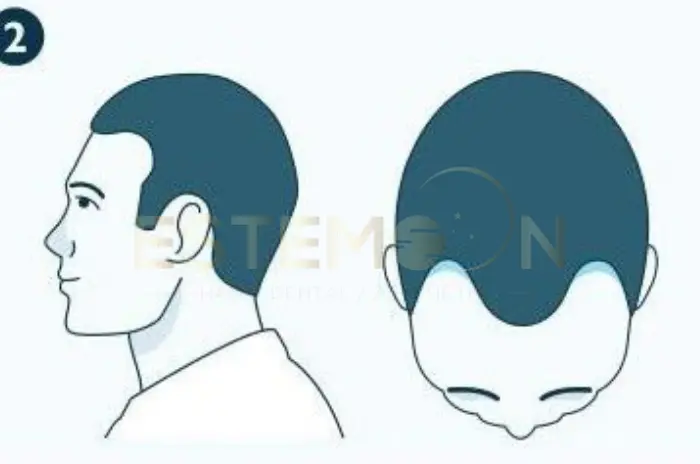Have you ever wondered exactly how much hair grows in a year? Understanding your hair’s natural growth pattern is the first step toward achieving your hair goals. Whether you’re recovering from a haircut you regret or simply want to maximize your hair’s potential, knowing the science behind hair growth can help you make informed decisions.
Hair growth is a fascinating biological process that varies from person to person. While genetics play a significant role, numerous factors influence how quickly your hair grows. From your diet and hormone levels to your daily hair care routine, every element contributes to your overall hair growth rate per year.

Average Hair Growth in a Year
The average hair growth rate for most people is approximately 6 inches (15 centimeters) per year. This translates to about half an inch (1.25 centimeters) per month. However, this is just an average, and individual results can vary significantly.
Scientific studies show that hair doesn’t grow at a constant rate throughout the year. Some research suggests hair may grow slightly faster during summer months due to increased circulation. Additionally, age plays a crucial role in growth speed. Children and young adults typically experience faster hair growth compared to older individuals.
Hair Growth per Month Explained
Breaking down annual growth into monthly measurements provides a clearer picture of what to expect. The average hair growth per month is typically 0.5 inches or 1.25 centimeters. This modest monthly increase may seem small, but it adds up significantly over time.
During each month, your hair follicles are actively producing new cells that push the hair strand upward. This process happens continuously, but you might not notice visible changes week by week. The key is consistency and patience when trying to achieve longer hair.
Monthly growth rates can fluctuate based on your body’s current state. During periods of high stress, illness, or nutritional deficiency, growth may slow down temporarily. Conversely, when you’re healthy and well-nourished, you may experience optimal growth rates.
Hair Growth Cycle Stages
Understanding the hair growth cycle phases is essential for comprehending why your hair grows the way it does. Hair follows a predictable cycle with distinct stages.
Anagen Phase (Growth Phase)
The anagen phase hair growth stage is the active growth period that typically lasts between 2 to 7 years. During this phase, cells in the hair follicle divide rapidly, creating the hair shaft. Approximately 90% of your hair is in this phase at any given time.
The length of your anagen phase is primarily determined by genetics. People who can grow very long hair naturally have longer anagen phases. This phase determines your hair’s maximum potential length before it naturally sheds.
Catagen Phase (Transition Phase)
This brief transitional stage lasts about 2 to 3 weeks. During the catagen phase, hair growth stops, and the outer root sheath shrinks. Approximately 3% of all hairs are in this phase at any time.
Telogen Phase (Resting Phase)
The telogen phase is the resting period that lasts around 3 months. At the end of this phase, the hair falls out, and a new hair begins to grow in the follicle. About 10-15% of your hair is in this phase simultaneously.
Understanding these hair growth cycle stages explains why losing 50-100 hairs daily is completely normal.
What Factors Affect Hair Growth Speed
Multiple elements influence what affects hair growth speed, and understanding them empowers you to optimize your hair care approach.
Genetics is the primary determinant of your hair growth potential. Your genes control the length of your anagen phase, hair thickness, texture, and maximum length. While you cannot change your genetic blueprint, you can maximize your genetic potential through proper care.
Age significantly impacts growth rates. Hair typically grows fastest during your 20s and 30s, then gradually slows down. Hormonal changes during puberty, pregnancy, and menopause can dramatically affect growth patterns.
Overall health status directly correlates with hair growth. Chronic illnesses, autoimmune conditions, and thyroid disorders can substantially slow growth or cause hair loss causes to manifest. Medications for various conditions may also impact growth rates.
Stress levels affect hair profoundly. Chronic stress can push hair follicles into the telogen phase prematurely, leading to increased shedding and slower visible growth. Managing stress through meditation, exercise, or therapy supports healthier hair growth.
How Diet and Nutrition Influence Hair Growth
Your hair growth diet plays a fundamental role in determining growth rate and hair quality. Hair is made primarily of protein, specifically keratin, making adequate protein intake essential.
Essential Nutrients for Hair Growth
Protein should be consumed at every meal to provide the building blocks for hair structure. Aim for lean meats, fish, eggs, legumes, and dairy products. Insufficient protein can force hair into the resting phase prematurely.
Iron deficiency is one of the most common nutritional causes of hair loss, particularly in women. Iron helps red blood cells carry oxygen to hair follicles. Include iron-rich foods like red meat, spinach, and lentils in your diet.
Omega-3 fatty acids nourish hair and support scalp health. Found in fatty fish, walnuts, and flaxseeds, these healthy fats reduce inflammation and promote hair density.
Biotin (Vitamin B7) is often touted as a hair growth vitamin. Though deficiency is rare, adequate biotin supports keratin production. Eggs, nuts, and sweet potatoes are excellent sources.
| Nutrient | Food Sources | Daily Amount |
|---|---|---|
| Protein | Chicken, fish, eggs | 46-56 grams |
| Iron | Red meat, spinach | 8-18 mg |
| Biotin | Eggs, almonds | 30 mcg |
| Vitamin D | Fatty fish, milk | 600-800 IU |
| Omega-3 | Salmon, walnuts | 1.1-1.6 grams |

Role of Hormones and Scalp Health in Hair Growth
Hormones are chemical messengers that significantly influence hair growth patterns. Understanding their impact helps explain why growth rates fluctuate during different life stages.
Thyroid hormones regulate metabolism, including the rate of hair growth. Both hypothyroidism and hyperthyroidism can cause hair thinning and altered growth rates. If you suspect thyroid issues, consult with a healthcare provider.
Androgens, particularly DHT, play a complex role. While testosterone is necessary for hair growth in certain areas, its conversion to DHT can shrink hair follicles on the scalp.
Estrogen promotes hair growth and prolongs the anagen phase. This explains why many women experience thicker hair during pregnancy when estrogen levels are elevated, followed by increased shedding postpartum.
Scalp Health Fundamentals
A healthy scalp environment is essential for optimal hair growth. The scalp houses your hair follicles and must be treated carefully.
Proper cleansing removes product buildup, excess oil, and dead skin cells that can clog follicles. However, over-washing strips natural oils, so find a balance—typically 2-3 times weekly for most people.
Scalp circulation delivers essential nutrients and oxygen to follicles. Poor circulation can slow growth. Regular scalp massage for hair growth stimulates blood flow and may extend the anagen phase.
Ways to Support Faster Natural Hair Growth
While you cannot dramatically exceed your genetic growth potential, implementing healthy hair growth practices can help you achieve your maximum possible growth rate.
Optimize Your Hair Care Routine
Minimize heat damage by limiting use of hot tools. When you must use them, always apply a heat protectant spray. Air-drying whenever possible preserves hair integrity.
Choose gentle hair products free from harsh sulfates. Look for nourishing ingredients like argan oil, coconut oil, and keratin in your shampoos and conditioners.
Avoid tight hairstyles that create tension on hair follicles. Constant pulling can cause traction alopecia. Vary your hairstyles and give your hair breaks.
Lifestyle Modifications for Better Growth
Reduce stress through activities you enjoy. Whether it’s yoga, running, or reading, find healthy outlets. High cortisol levels can push hair into the shedding phase prematurely.
Prioritize sleep because growth hormones peak during deep sleep. Aim for 7-9 hours of quality sleep nightly. Your body repairs and regenerates during sleep, including hair follicle cells.
Exercise regularly to improve overall circulation, including blood flow to your scalp. Physical activity also helps manage stress hormones and supports hormone balance.
Advanced Growth-Supporting Strategies
Scalp massages deserve special attention among hair growth tips. Spend 5-10 minutes daily massaging your scalp with your fingertips using circular motions. This simple practice increases blood flow and may stimulate follicles.
Consider supplements after consulting with a healthcare provider. While a balanced diet should provide most nutrients, supplements like biotin and collagen may benefit those with deficiencies.
Protect hair while sleeping by using silk or satin pillowcases that create less friction than cotton. Consider loose braids to prevent breakage during sleep.
Cold water rinses after conditioning can help seal the hair cuticle, making hair appear shinier and less prone to damage.
What to Avoid
Chemical treatments like bleaching and perming weaken hair structure. If you color your hair, space treatments appropriately and use bond-building products.
How Much Does Hair Grow in a Year: Frequently Asked Questions
How many inches does your hair grow each year?
How much does hair grow in a year on average is approximately 6 inches (15 cm), though this varies based on genetics, age, ethnicity, and overall health.
Do hormones and diet affect hair growth rate?
Yes, hormones like thyroid, estrogen, and androgens significantly influence growth rates, while a nutrient-rich hair growth diet with adequate protein, vitamins, and minerals is essential for optimal growth.
What easy ways promote faster natural hair growth?
Simple hair growth tips include regular scalp massage, reducing heat styling, managing stress, getting adequate sleep, staying hydrated, and maintaining a balanced diet rich in protein and essential nutrients.
Can proper nutrition really help hair grow faster?
Absolutely, since hair is made of protein and requires specific hair growth vitamins and minerals like iron, biotin, and zinc; nutritional deficiencies can slow growth significantly while proper nutrition helps you reach your genetic growth potential.
Follow us on social media for updates, tips, and patient success stories:



